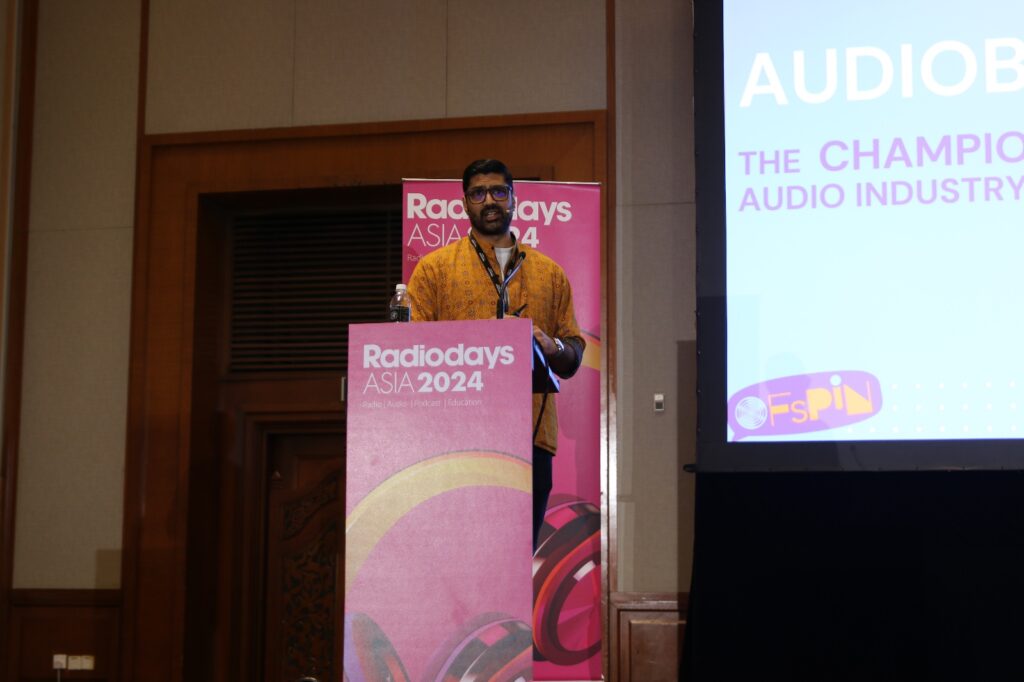By Chen Yin Ying
Audiobooks have become increasingly common for many, not just as a one-time experience, but as a habitual part of their daily lives. According to the statistics shared by Siddhanta Pinto, who is the founder of OfSpin, there are 85% of listeners deeply engaged in audiobooks and willing to spend their precious time on it. This engagement is fuelled by the habits audiobooks form—listeners are always on the hunt for their next favourite title.
Firstly, Siddhanta mentioned that OfSpin was founded in August 2004 as a FM radio. It offers satellite, internet and corporate radio with various languages and types. The radio industry is rapidly evolving through digital advancements, driven by apps and new technologies. Digital platforms, including streaming services and internet radio, have increased listener engagement and time spent with audio content. This shift has established strong habits and successful monetization models, as seen in the thriving audiobook market.
Secondly, Justine Murray, Senior Podcast Producer at Radio NZ National, emphasised the importance of connection, access, and sharing resources in storytelling. She highlighted how platforms like Spotify and TikTok help foster cultural conversations and human connections. Murray mentioned the need for collaboration, as seen in partnerships with NRZ and Tehuki Media. Key points include the importance of access to stories, the role of indigenous perspectives, the necessity of collaboration, and the careful integration of technology.
Lastly, Chang Lu, Radio Programme Producer at CGTN Radio, emphasised the power of storytelling in audience engagement. Their recent drama, “Echoes of Kuliang” (2024), weaves themes of love, peace, and friendship across time, resonating emotionally with global audiences. To engage listeners creatively, they use viral design, graphics of local snacks, and compelling animation, especially for younger audiences. With 35 million views, they believed in music’s unique ability to bridge language barriers. Chang Lu highlighted innovation, fresh approaches, and meaningful connections as keys to successful storytelling.


